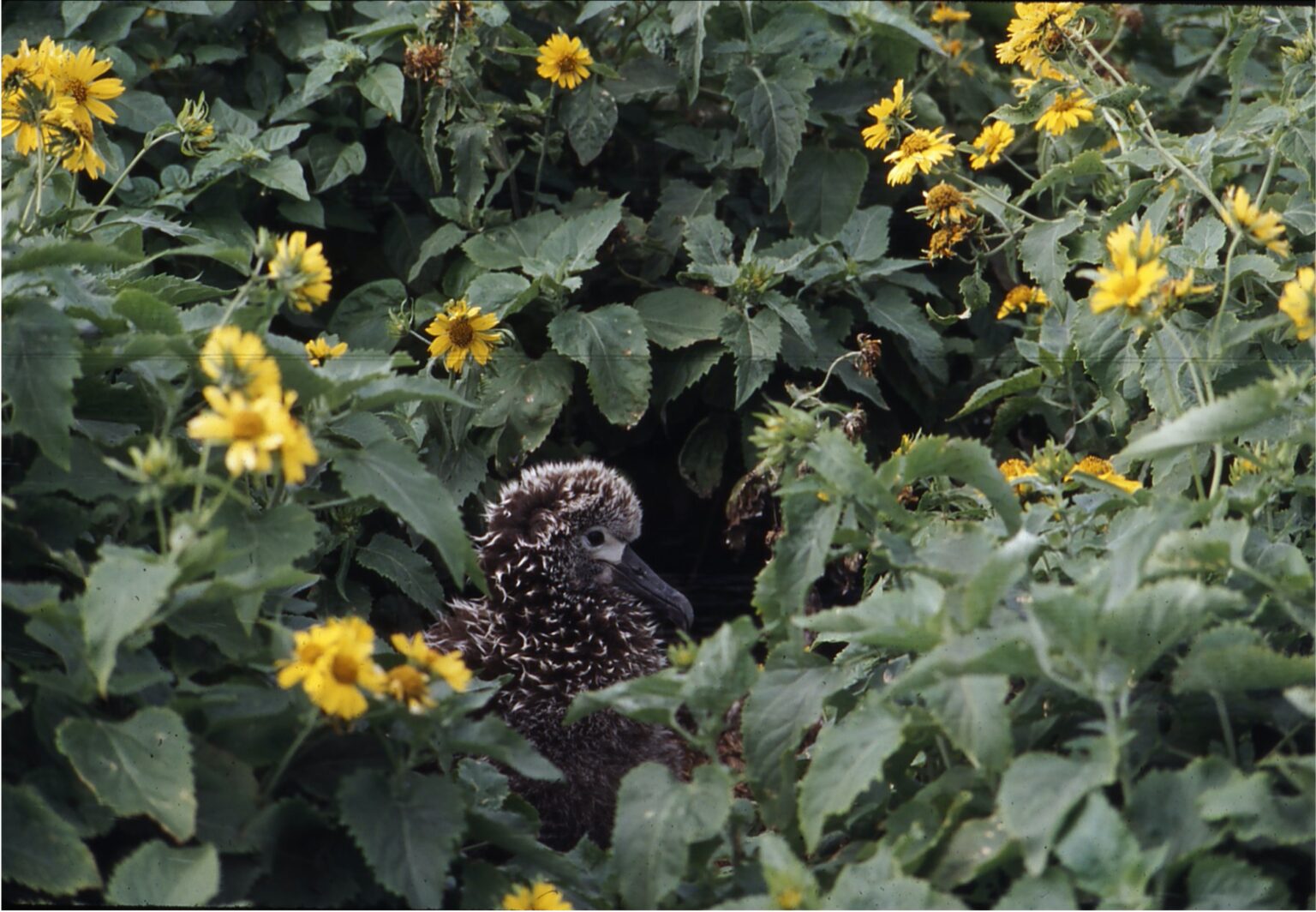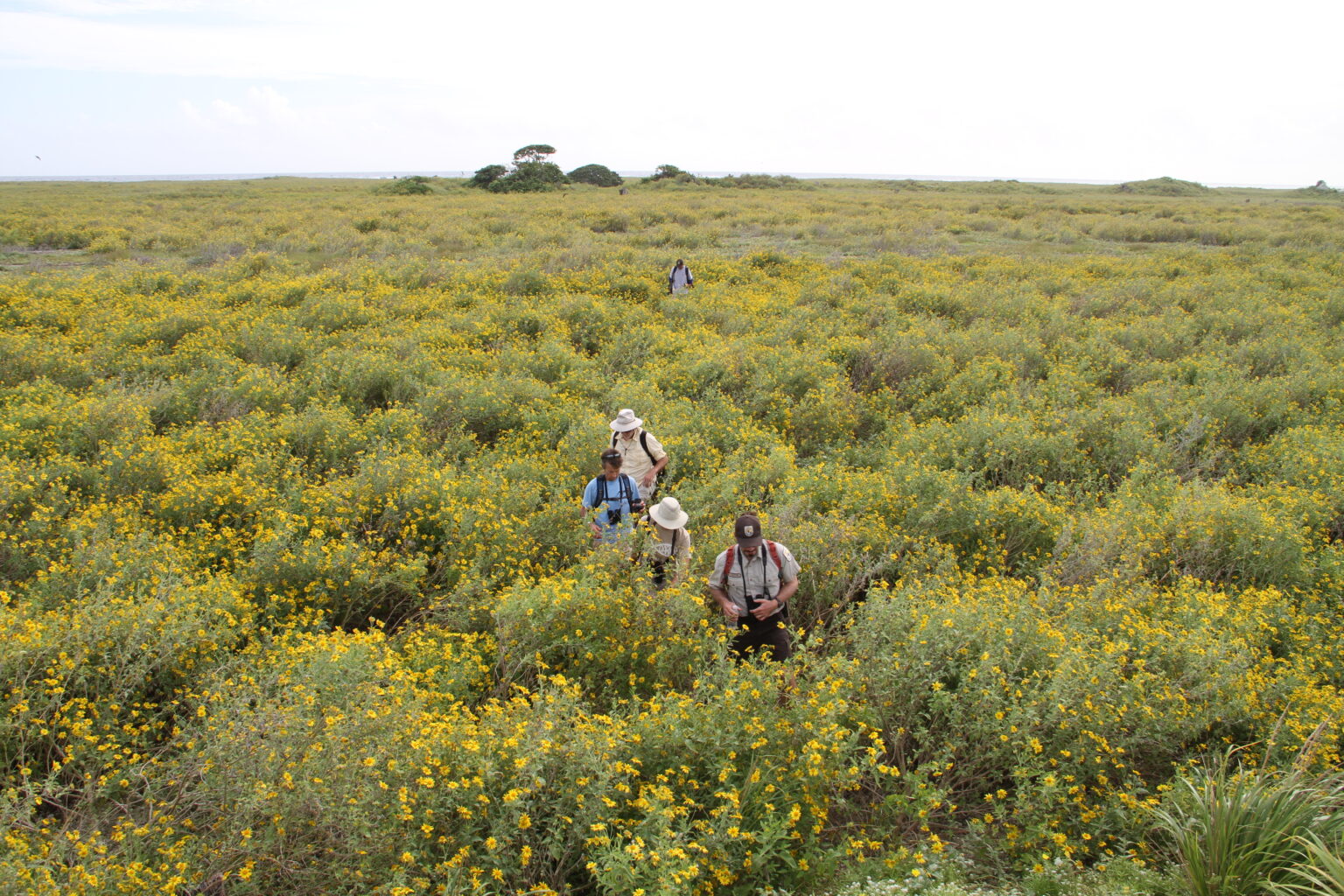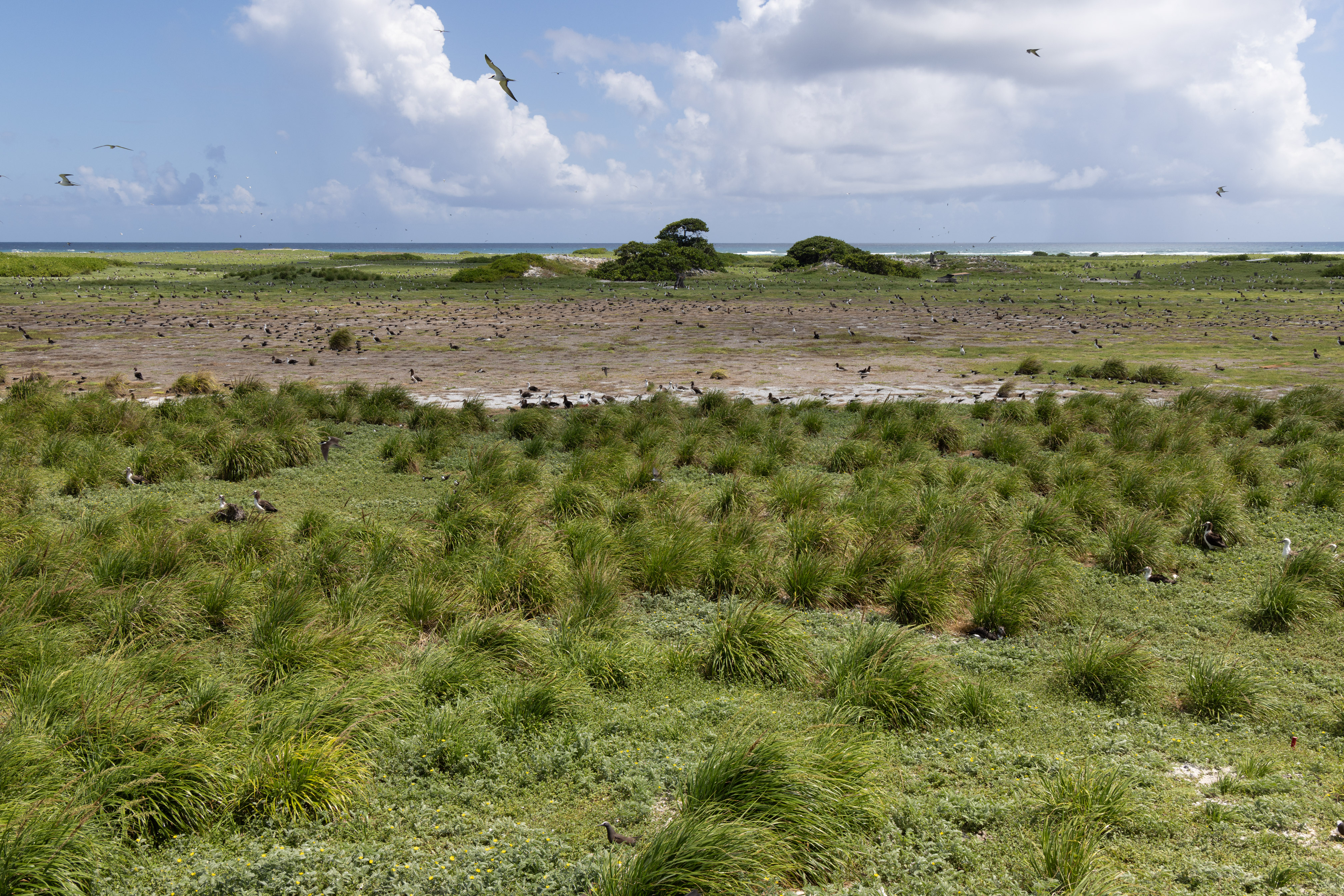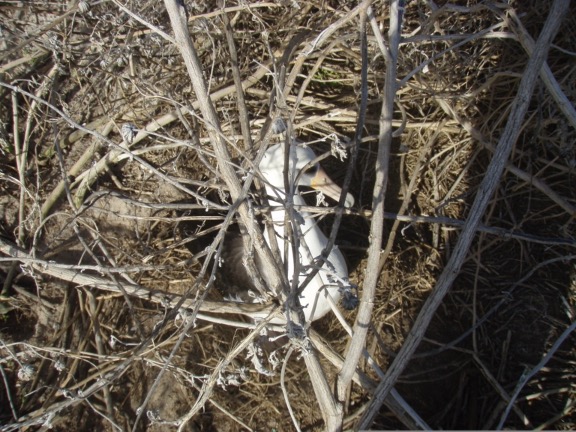
Not a cool situation. An albatross chick is near buried among flowering Verbesina on Midway, photograph from the US Fish and Wildlife Service
Following the failure of the House Mouse Mus musculus eradication effort on Midway Atoll in the North Pacific this year as recently reported, more positive news is to hand on another eradication effort, to rid both Sand and Eastern Islands within the atoll of the introduced Golden Crownbeard Verbesina encelioides. This invasive plant forms “chest-high, impenetrable thickets” in which breeding Black-footed Phoebastria nigripes and Laysan P. immutabilis Albatrosses have difficulty reaching and departing from their nest sites, become entangled, and their well-insulated, downy chicks overheat due the plants' sheltering effect against cooling sea breezes.


Before (2011) and after (2023) views on Eastern Island from the same spot. The dense Verbesina has been replaced with “outplanted” native grass Eragrostis variabilis, photographs by Pete Leary (top) and Jon Brack (bottom)
In May 2000 I spent a week on Midway following the Second International Conference on the Biology and Conservation of Albatrosses and other Petrels, held in Honolulu, Hawaii. Along with other conference delegates (we filled a whole plane to get there). I experienced the dense Verbesina stands with albatrosses breeding among them on both Sand and Eastern Islands. As the before and after photographs taken over a decade apart show, a concerted effort since my visit to remove plants and exhaust the seed load within the sandy soil shows remarkable differences. Study plots on both islands have demonstrated the value of clearing away the daisy-like plant with breeding success almost doubling in treated areas, compared to untreated controls. With atoll-wide eradicatioin hopefully approaching the last remaining one percent of Verbesina is being targeted by cutting paths through the native vegetation to access the remaining mature plants to remove their flower heads before they set seed and to find seedlings which are then sprayed with herbicide (click here).

This Laysan Albatross on its nest is covered with a tangle of collapsed Verbesina stems, photograph by Matt Brown
Read an earlier article on the eradication effort in ACAP Latest News here.
John Cooper, Emeritus Information Officer, Agreement on the Conservation of Albatrosses and Petrels, 12 September 2023

 English
English  Français
Français  Español
Español